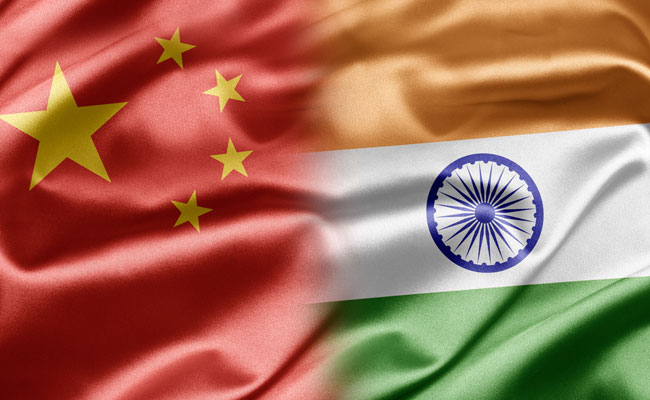
Instead of signing FTAs, we should invite FDI from China. That will guarantee investments and knowhow to help improve India’s manufacturing ecosystem. It will also address India’s trade deficit in the long run
Steven Philip Warner | @TheDollarBiz
It’s surprising how many stakeholders and policymakers in India are proclaiming an India-China Free Trade Agreement (FTA) to be a matter of “macroeconomic exigency”. Given China’s dominance in the world of foreign trade, especially exports, this seems a measured idea from a distance. But closer observation proves that this elixir of a relationship, guaranteed to induce prosperity for India, is nothing but a sour “poison pill”. Let’s explore three reasons why the Indo-China foreign trade marriage – using the platform of Regional Comprehensive Economic Partnership (RCEP) [that includes the ASEAN bloc and six other nations] – is a mission that should be aborted.
Reason #1: Fifteen years since we got up in a hurry to sign FTAs, we are still to find reasonable numeric justification for the very birth of these harmonies. Since 2005, these RTAs have worked more to spoil the chart of trade deficit. Imports from our bilateral trade partners have increased by 12.3% since then. Consider the ambitious pact with the ASEAN bloc, Japan & South Korea. In the past decade, our trade deficit with these geographies have increased close to 300%. If you consider the ASEAN bloc, since FY2005, we have accumulated a deficit of over $56 billion. That our annual trade deficit with 24 FTA partner nations has risen by 262% in the past decade, should be enough indication for the wise.
Reason #2: Are we ready to kill brand India? Studies by scholars have proven that India has remained primarily a “raw material exporter” while China has moved up the value chain to become a champion exporter of “finished goods”. Unlike China, India has yet to blend into the global production networks of high-tech products. A narrow FTA covering only goods trade will not benefit us even if China were to completely open up its market to India.“Brand China” is today gradually winning attention for quality. We need to answer a question here: Why is it that despite trade deficits with ASEAN, Japan and Korea rising past the roof since FY2004, our surplus with SAFTA has grown? Secret: SAFTA has seven nations – Nepal, Afghanistan, Bhutan, Pakistan, Sri Lanka, Bangladesh and Maldives – all of whom have consumers that appreciate volume and price more than quality! It is worth noting that in the 2014 Milward Brown ranking of world’s 100 most valuable brands, there are 10 Chinese brands. And Indian? ZERO! An FTA with China will mean mass assassination of brand India. We cannot forever remain a raw material supplier to the world.
Reason #3: It is not without wisdom that China has become the world’s largest exporter of merchandise. Of the $14.84 billion in exports to China during FY2014, just nine products from India (six-digit HS code) accounted for over 50% of the export value. These were products like cotton, iron ore, slag, ash, etc. – none of which you can be proud of, as you are when you hear terms like “brain drainage” or “IITs”. Next, imagine China’s offering at the ports. There were 60 items that made up half of its exports to India. And more than 30% of these products can be categorised as ones that require “science” to manufacture! In the case of Chinese exports to India, there are 76 products whose exports crossed the $100 million mark each. In the case of India’s exports? Just 25! At present, China exports 3,765 products to India, compared to 2,064 items that it buys from India. The argument is that a bigger export basket of bestsellers will mean that any FTA will imply China getting the clear upper hand. And if the FTA happens, the current act of “dumping” will only become legal. What happens to India’s domestic manufacturing industry then? Instead of an FTA, accords that get Chinese FDI to build on India’s manufacturing capabilities should be encouraged.
China’s FTAs are proof that it knows how to keep the cake and eat it too. Currently, China has 11 FTAs. It recorded a trade surplus of $370 billion in 2013 with its group of FTA partners – a growth of more than $300 billion in the past decade! To give you a glaring instance of what can be expected from the India-China FTA, until CY2006, Indonesia had recorded a trade surplus with China. The very next year, the China-Indonesia FTA came into full force. Starting 2007, Indonesia has been running a bilateral trade deficit with China! Moral: “If you find yourself in a [deficit] hole, stop digging!”
Get the latest resources, news and more...
By clicking "sign up" you agree to receive emails from The Dollar Business and accept our web terms of use and privacy and cookie policy.
Copyright @2026 The Dollar Business. All rights reserved.
Your Cookie Controls: This site uses cookies to improve user experience, and may offer tailored advertising and enable social media sharing. Wherever needed by applicable law, we will obtain your consent before we place any cookies on your device that are not strictly necessary for the functioning of our website. By clicking "Accept All Cookies", you agree to our use of cookies and acknowledge that you have read this website's updated Terms & Conditions, Disclaimer, Privacy and other policies, and agree to all of them.

